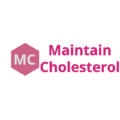Table of Contents
Introduction
Food is essential for the survival of living organisms. The components of food contain the source of energy, building blocks for body, metabolism supporters and self healing nutrients. It provides us with the energy we need to carry out daily activities, as well as the nutrients we need to grow, develop, and repair our bodies.
The major components are called as macronutrients and consist of carbohydrates, fats, and proteins. The other nutrients present in small quantities are called micronutrients. Micronutrients consist of vitamins and minerals.
Good nutrition is very essential to lead a healthier life. Good nutrition helps us prevent chronic diseases as well as help us reverse chronic diseases.
In this blog article, you will learn what our food should consist of- only carbohydrates, fats, and proteins or nutrient dense foods.
The food that we consume comes from a variety of sources. Some common sources include plants, animals, and the ocean. The variety of food available is vast, so it is important to be able to identify healthy options.
============
To understand how food varies in its sources and components, consider the last meal you had. Where did the food come from? What nutrients did it provide? By understanding the sources and components of our food, we can make better choices about what we eat
Also Read: What are vitamins and minerals?
What are the different components present in food?
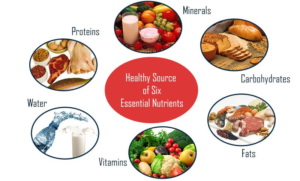
The different components present in food are:
-
Carbohydrates
Carbohydrates comprise about 60 % of an individual’s diet. It is a vital source of energy. It gets digested in the digestive system. On digestion, it is converted to simple sugars like glucose, galactose and fructose.
These digested nutrients are absorbed through the intestine where they are converted into glucose. Then glucose is transported to all the cells through the circulatory system and excess if any is stored as converted to fat by the process called glucogenesis.
It is metabolized in the body to for ATP. ATP is the energy currency of the cells.
A vital source of energy, carbohydrates comprise about 60% of an individual’s diet. Most of your energy needs are met by carbohydrates.
Choose wisely from complex carbohydrate sources such as whole grains-wheat, millet, brown rice etc. Whole grains also provide fiber and micronutrients.
-
Fats
Fats contribute to about 15% of daily caloric needs and are a major energy source. The fats can be saturated or unsaturated fats. They could be of animal origin, or plant origin.
Just like carbohydrates, fats are also a source of energy. The calorific value of fats is more than that of carbohydrates.
Fats also contain omega-3 fatty acids, which are very essential for making hormones.
Fats also contain some fat soluble vitamins like Vitamin D and E.
They are also vital for storing and providing vitamins and synthesize hormones. Some of the good sources of fats for one’s daily diet can come from polyunsaturated fats such as flax seeds, sunflower seed etc., monounsaturated fats such as olive oil, sesame oil etc., and saturated fats such as butter, and ghee – however, remember to use them in moderation.
-
Protein
Proteins are made up of amino acids, which are the building blocks for the body. There are 20 amino acids present. 8 amino acids are essential acids.
The proteins also provide us with several important b complex vitamins.
Protein is needed to assist your body to repair cells and make new ones.
It is also essential for growth and development during the various stages of life.
About 25% of daily calories should come from protein found in pulses like- moong dal, urad dhal and legumes like-kidney beans (rajma), black-eyed beans (lobia), and chickpeas (channa).
Milk and milk products like -paneer, curd, and yoghurt are also a great source of protein. For the non-vegetarians, good sources include eggs, fish and lean meat.
-
Vitamins
Vitamins are a very essential nutrient and because our body doesn’t produce enough vitamins on its own. We have to get those vitamins from the food we eat.
They are essential for metabolism fats, carbs and amino acids.
Vitamins not only are a nutrient but they also facilitate the use of other nutrients.
A couple of the roles they play in our body is regulating our growth and manufacturing our hormones.
Vitamins don’t contain calories like carbs or proteins do and also don’t provide our body with any energy, but are crucial for our health
5 . Minerals
Minerals such as calcium and phosphorus help build healthy and strong bones and teeth, help our nervous system function properly like helping our heart beat at a regular pace and help aid in the function of our muscles.
The mineral potassium can manage diabetes and make our brain function better then it normally would, magnesium reduces stress and anxiety and lowers high blood pressure.
All minerals are essential to healthy living but we don’t need the same amount of every mineral.
Minerals needed in our diets everyday are called macro-minerals or major-minerals and ones that we don’t need as often are called micro-minerals. Although minerals are essential if you take intake to many it could be harmful.
Micronutrients – vitamins and minerals support metabolism, nerve and muscle function, bone maintenance and cell production. Fruits and vegetables are the major sources of vitamins and minerals including potassium, iron, folate, vitamin A and vitamin C.
New Way of Classification of Foods
The foods can be classified into three groups:
- Energy providers
- Building block providers
- Metabolizers and cellular function supporters
Energy providers: Under the first category are foods that can be used to provide energy to the body. Examples are carbohydrates and fats. Amino acids obtained from digestion of proteins can also be used as sources of energy.
Digestion of food produces mainly glucose from carbohydrates, fatty acids from fats and 20 amino acids from proteins. Body can make use of all these three types of nutrients to produce the energy continuously needed by each and every cell of the body.
Building block providers: Under the second category are protein foods. They contain amino acids. Amino acids are the building blocks of our body. Our muscles, tissues, organs, enzymes and many hormones are made in the body from the.
Some carbohydrates and fatty acids are also providers of building blocks. However, they are made in situ in the body.
Metabolizers and cellular function supporters: Under the third category comes the nutrients like fiber, vitamins, and minerals. These vitamins and micronutrients as required in only small amounts. They have a great role to play in several bodily functions or cellular functions. Without them, good health is not possible.
Energy providers
Carbohydrates and fats are the main sources of energy in the body. However, if necessary, the amino acids present in proteins can also be converted to energy.
The interesting part is here. Eat proteins, fats, and carbs and we get the energy is what we think. I have eaten proteins, fats, and carbohydrates. Now I will get energy. Very often we take dextrose dissolved in water to get instant energy.
We feel that it is very simple to get energy. Eat sugar as a source of energy. We get oxygen through breathing. Then this oxygen will help the body to burn sugar and generate energy. It is not so simple to get energy out of eating sugar.
Building block providers
Proteins: Necessary for tissue formation, cell reparation, and hormone and enzyme production. It is essential for building strong muscles and a healthy immune system. Proteins provide amino acids which are used to build cells, tissues, muscles and so on. They are also used to produce enzymes that are needed for carrying out various biological reactions
Proteins contain 20 amino acids. Out of them, 8 are essential amino acids.
Essential amino acids, also known as indispensable amino acids, are amino acids that humans and other vertebrates cannot synthesize from metabolic intermediates. These amino acids must be supplied from an exogenous diet because the human body lacks the metabolic pathways required to synthesize these amino acids.[1][2]
Every day our body makes millions of cells for which amino acids are required. If some of the essential amino acids are absent, the body will not be able to function properly because of the deficiency of those amino acids. This affects our health
Metabolizers and cellular function supporters.
On digestion of carbohydrates, we get glucose as the main nutrient, which is absorbed through the intestines and transported to the liver. From the liver, glucose is sent to the cells wherever required. Excess if any is converted to polymeric glucose by a process called glucogenesis and stored as fat for future use.
Petrol when ignited in the presence of oxygen, it burns and produces carbon dioxide and energy. This is a one step process for energy production.
In our body glucose is oxidized to ATP and carbon dioxide. One molecule of glucose produces 36 units of ATP, which is the energy currency of our body.
Many of you are not aware or think that getting energy from glucose is very simple. Sorry, no, not at all. It is not simple.
When the cell enters the cell then it has to undergo several enzymic oxidation stages, first in the cytosol and then in the mitochondria, where maximum energy is produced.
Only in the cytosol, glucose is converted to pyruvic acid in 10 enzymatic steps and produces only two units of ATP out of 36. Glucose cannot do anything by itself. The specific enzymes, coenzymes, and co-factors have to metabolize glucose into degradation products in a stepwise function.
The micronutrients present in food contain various vitamins, water and fat soluble, and minerals. These micronutrients are necessary for the metabolization of carbohydrates. Apart from metabolization, cells have several other functions to perform where these micronutrients are used.
It is the B complex vitamins that are used in metabolizing carbohydrates. Without metabolizers and cellular function supporters our body cells cannot function optimally. Their deficiency will affect cellular function and cause diseases.
B complex Vitamins and coenzymes
Vitamins, especially the B-complex vitamins, act first and foremost as coenzymes. According to Stedman’s Medical Dictionary, a coenzyme is a substance that enhances or is necessary for the action of enzymes. An enzyme is a protein that acts as a catalyst to induce chemical changes in other substances while remaining apparently unchanged itself by the process. Enzymes regulate numerous life-sustaining chemical reactions. Unless a coenzyme is present, however (e.g., B vitamins), an enzyme cannot function.
In essence, the B-complex vitamins act as coenzymes in energy metabolism. The B complex of vitamins includes thiamin (vitamin B1), riboflavin (vitamin B2), niacin, vitamin B6 (pyridoxine), folate (folic acid), vitamin B12 (cobalamin), pantothenic acid, and biotin.
Thiamin (Vitamin B1)

The Function of the B-Complex Vitamins Thiamin (B1) is part of the coenzyme thiamin pyrophosphate, which plays a critical role in the breakdown of glucose for energy and acts as a coenzyme in the metabolism of branch-chain amino acids (leucine, isoleucine, and valine). Thiamin also plays a role in the synthesis and regulation of neurotransmitters, chemical agents that help nerve cells communicate. Thiamin also helps reactions make RNA and DNA, energy-rich molecules that generate protein synthesis
Riboflavin (Vitamin B2)

Riboflavin (B2) is a part of two coenzymes (Flavin mononucleotide and flavin adenine dinucleotide).
The two coenzymes participate in oxidation-reduction reactions during energy production within
the metabolic pathways. Riboflavin also is part of the antioxidant enzyme glutathione peroxidase.
Niacin (Vitamin B3)

Niacin, also known as nicotinamide or nicotinic acid, is a coenzyme (in over 200 metabolic pathways) that assists in the metabolism of carbohydrates and fatty acids, especially during increased energy expenditure. It also plays an important role in DNA replication and repair and in the process of cell differentiation.
Pyridoxin (Vitamin B6)
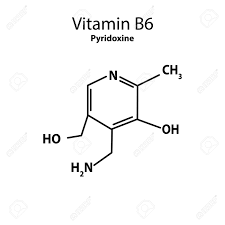
Pyridoxine (B6) is a group of six compounds, three with a phosphate group and three without. Digestion strips the phosphate group and sends the remaining compounds to the liver, which converts them to pyridoxal phosphate, the primary active coenzyme form (from discussion at the 1998 board meeting of the Institute of Medicine, Food and Nutrition). Pyridoxal phosphate is a coenzyme for more than 100 different enzymes involved in the metabolism of amino acids.
It is crucial in the process known as transamination: It assists in the metabolism of carbohydrates, helps synthesize oxygen-carrying hemoglobin, and helps produce neurotransmitters. It also lowers blood levels of the amino acid homocysteine. Translation: Pyridoxal phosphate helps change one amino acid into another (transamination). Without adequate pyridoxine, all amino acids become essential (from our diet), because our bodies cannot make them in sufficient quantities.
Pyridoxine helps deliver oxygen throughout our body and helps nerve cells communicate. Pyridoxine also works with folate and vitamin B12 to lower blood levels of the amino acid homocysteine, elevated levels of which are linked to an increased risk of heart attack.
Folic Acid
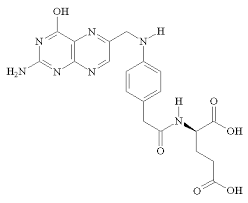
Folate is involved with DNA synthesis, the maturation of red blood cells and other cells, and amino-acid metabolism. It helps lower blood levels of homocysteine. Low levels of folate have been linked to birth defects because of its role in cell division during the first few weeks of pregnancy.
Comalamin (Vitamin B12)
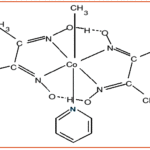
Cobalamin (B12) assists with the formation of blood, transforms folate into an active form, and maintains the myelin sheath (a protective coating that surrounds nerve fibers).
Pantothenic Acid
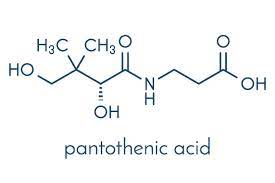
Pantothenic acid is a component of coenzyme A, which is part of acetyl coenzyme A. Through coenzyme A, pantothenic acid is involved in many metabolic reactions that extract energy from fatty acids.
Biotin

Biotin is a coenzyme in over 40 reactions, primarily the metabolism of carbohydrates, fat, and protein, including gluconeogenesis (the formation of glucose from no carbohydrates such as protein). Biotin is critical to the breakdown of carbohydrates to glucose, fat to fatty acid, and protein to amino acids. It also helps in the conversion of amino acids to glucose gluconeogenesis).
————————————————————————————————————————————-
References
Walters, P., & Byl, J. (n.d.). Christian Paths to Health and Wellness 2E: The six categories of nutrients. Retrieved from http://www.humankinetics.com/excerpts/excerpts/the-six-categories-of-nutrients
N. (2016, September 23). Six Basic Nutrients Required for Good Health -#Carbohydrate, #Proteins, #Vitamins, #Fat, #Minerals & #Water pic.twitter.com/hMgxAEArh5. Retrieved from https://twitter.com/buggynatures/status/779255128884781057
Robb, A. (n.d.). What are Nutrients? Definition and Examples. Retrieved June 13, 2018, from https://study.com/academy/lesson/what-are-nutrients-definition-examples.html
F. (n.d.). Why do we need minerals. Why do we need to eat minerals? Retrieved June 13, 2018, from http://www.eatbalanced.com/why-eat-balanced/why-do-we-need-minerals/
